Caryn’s Thoughts
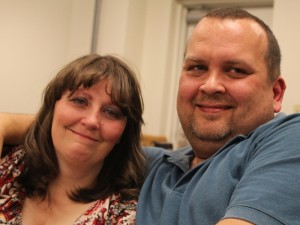
 My daughter, Corrie Petersen is one of the hardest working people I know. She works full-time, and goes to nursing school full-time too. Anyone who has been in nursing school will tell you that it is not and easy, and it’s even harder if you work. Nevertheless, Corrie is determined, and she is so excited about the future. Every skill she achieves, every class she completes, and every semester that is behind her are cause for celebration. She loves the work she does and she really has a heart for it. I have spoken to friends she has taken care of, and they told me that she was so good to them. In fact they couldn’t wait to tell me that she took care of them, since she could not tell me due to privacy laws.
My daughter, Corrie Petersen is one of the hardest working people I know. She works full-time, and goes to nursing school full-time too. Anyone who has been in nursing school will tell you that it is not and easy, and it’s even harder if you work. Nevertheless, Corrie is determined, and she is so excited about the future. Every skill she achieves, every class she completes, and every semester that is behind her are cause for celebration. She loves the work she does and she really has a heart for it. I have spoken to friends she has taken care of, and they told me that she was so good to them. In fact they couldn’t wait to tell me that she took care of them, since she could not tell me due to privacy laws.
Corrie is an important member of the CNA staff at Wyoming Medical Center. CNAs are hard to find and harder still to keep, and many times she is the lone CNA on her floor. It’s a tough job, with lots of heavy lifting, and lots of work that many people feel is “beneath them,” but Corrie takes it all in stride. I know this because, while I’m not a nurse or a CNA, I was a caregiver for 14 years, and Corrie was a part of my team. She went on to continue the job of caregiving and then decided to become a nurse, starting by becoming a CNA, so she has been doing this job for more than 16 years. She did the work of a CNA, and even of a nurse, long before she had the title, and her four grandparents were grateful to her and the rest of the team for the care and comfort she and the rest of the team provided. Corrie did not go into the career of nursing blindly, like many people who decide on it right out of high school. Yes, some are sure of what they want to do, and follow through with great success, but others find that the work isn’t for them, and they soon move on to other careers.

 Becoming a nurse is no easy task, as any nurse will tell you. You have to stick to the plan, work and study hard, and never give up. If you don’t have “stick-to-it-iveness,” you won’t make it in this line of work…or in the schooling it takes to get into this line of work. I am very proud of all the hard work Corrie has done and continues to do to achieve her dream. Today is Corrie’s birthday. Happy birthday Corrie!! Have a great day!! We love you!!
Becoming a nurse is no easy task, as any nurse will tell you. You have to stick to the plan, work and study hard, and never give up. If you don’t have “stick-to-it-iveness,” you won’t make it in this line of work…or in the schooling it takes to get into this line of work. I am very proud of all the hard work Corrie has done and continues to do to achieve her dream. Today is Corrie’s birthday. Happy birthday Corrie!! Have a great day!! We love you!!
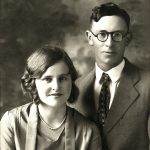
 My husband, Bob Schulenberg’s grandmother, Nettie Knox was not born during the pioneer era, but she did live a life that mirrored that era to a degree. While she was born in the West, in Clydes Park, Montana, she was nevertheless, a kind of pioneer woman. Grandma was born on June 30, 1909 to Orin and Eva (Landis) Noyes, and married Robert Knox on June 14, 1928. She was not born before cars were invented, but sometimes she lived like she was in the Old West. Grandpa was worked on a sheep ranch, and for a time when my mother-in-law, Joann Schulenberg was a little girl of about 3 years, they lived in a sheep wagon. The shepherd needed to be near the sheep, and Grandma was a homemaker, so she went with him. Plus, the sheep wagon was provided to them free of charge, and you don’t turn down a rent free place to live. Of course, that wasn’t where they lived for very long, because even with just the three of them for the first 15 years of her life, living in a sheep wagon would not really be roomy enough.
My husband, Bob Schulenberg’s grandmother, Nettie Knox was not born during the pioneer era, but she did live a life that mirrored that era to a degree. While she was born in the West, in Clydes Park, Montana, she was nevertheless, a kind of pioneer woman. Grandma was born on June 30, 1909 to Orin and Eva (Landis) Noyes, and married Robert Knox on June 14, 1928. She was not born before cars were invented, but sometimes she lived like she was in the Old West. Grandpa was worked on a sheep ranch, and for a time when my mother-in-law, Joann Schulenberg was a little girl of about 3 years, they lived in a sheep wagon. The shepherd needed to be near the sheep, and Grandma was a homemaker, so she went with him. Plus, the sheep wagon was provided to them free of charge, and you don’t turn down a rent free place to live. Of course, that wasn’t where they lived for very long, because even with just the three of them for the first 15 years of her life, living in a sheep wagon would not really be roomy enough.
Grandma loved tradition, Christmas, birthdays, and celebrations in general, but when my daughter, Corrie Petersen was born on her birthday, and she was her first great grandchild, Grandma was ecstatic!! She considered that to be the greatest git ever, and they always had a strong bond. They always celebrated that birthday together, and new pictures were taken every year to see how much they had both changed. Of course, to me it seemed that it was Corrie did the changing. She was the one that was growing up, and Grandma seemed to have a timelessness about her. In fact, it seemed like she had an innocence about her. Maybe it was her love of tradition and celebration, or maybe she was just blessed with good genes. Whatever it was, Grandma just never seemed to get old…to me at least. Maybe that was why Grandma and Corrie could have such a great relationship too. They could both get excited about the same kinds of things.
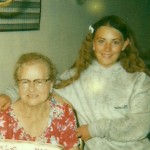
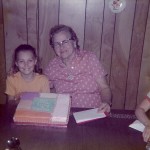 When I think of what Corrie is working on becoming, and has already become, I know that Grandma Knox would have been so proud of her. Grandma suffered with arthritis and always whiced that the medical community could find a cure for it. While there is no cure yet, maybe there will be someday. Nevertheless, Corrie tries to comfort people, no matter what the disease is that they have. Her job is is give comfort to her patients, and I know that Grandma would have seen that as a great contribution to the world. Today is the 113 anniversary of Grandma’s birth. Happy birthday in Heaven, Grandma. We love and miss you very much.
When I think of what Corrie is working on becoming, and has already become, I know that Grandma Knox would have been so proud of her. Grandma suffered with arthritis and always whiced that the medical community could find a cure for it. While there is no cure yet, maybe there will be someday. Nevertheless, Corrie tries to comfort people, no matter what the disease is that they have. Her job is is give comfort to her patients, and I know that Grandma would have seen that as a great contribution to the world. Today is the 113 anniversary of Grandma’s birth. Happy birthday in Heaven, Grandma. We love and miss you very much.
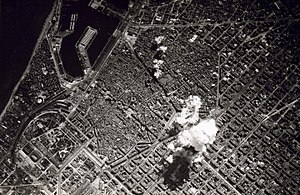 Sometimes, in researching weapons of war, and especially during World War II, I am shocked and horribly saddened by the ability of man to impose new and horrific means of death upon their enemies…simply because they disagree about how things should be run. During World War II, and possibly earlier, the killing method of Carpet bombing, also known as saturation bombing, came into practice. Carpet bombing is just what you would expect, “a large area bombardment done in a progressive manner to inflict damage in every part of a selected area of land.” Instantly, a picture of multiple explosions, the destruction of large areas of a town, or the entire town, come to mind. Mass casualties are expected. This is the way war is waged when hate reigns, but then most wars these days or even in the World War II era were filled with hate.
Sometimes, in researching weapons of war, and especially during World War II, I am shocked and horribly saddened by the ability of man to impose new and horrific means of death upon their enemies…simply because they disagree about how things should be run. During World War II, and possibly earlier, the killing method of Carpet bombing, also known as saturation bombing, came into practice. Carpet bombing is just what you would expect, “a large area bombardment done in a progressive manner to inflict damage in every part of a selected area of land.” Instantly, a picture of multiple explosions, the destruction of large areas of a town, or the entire town, come to mind. Mass casualties are expected. This is the way war is waged when hate reigns, but then most wars these days or even in the World War II era were filled with hate.
In the European Theatre, the first city to suffer heavily from aerial bombardment was Warsaw, on September 25, 1939. Achieving the results they wanted, the Germans continued this trend in warfare with the Rotterdam Blitz…an aerial bombardment of Rotterdam by 90 bombers of the German Air Force on May 14, 1940, during the German invasion of the Netherlands. The objective was to support the German assault on the city, break Dutch resistance, and force the Dutch to surrender. So in the middle of a ceasefire, they dropped the bombs anyway, destroying almost the entire historic city center, killing nearly nine hundred civilians and leaving 30,000 people homeless. That was still not enough for the Nazis. The Oberkommando der Luftwaffe (OKL) used the destructive success of the bombing to threaten to destroy the city of Utrecht, if the Dutch government did not surrender. The Dutch surrendered early the next morning.
With the actions of the Nazis, the British knew that they had to act. The Battle of Britain developed from a fight for air supremacy into the strategic and aerial bombing of London, Coventry and other British cities. The British built up the RAF Bomber Command in retaliation for the bombings, which was capable of delivering many thousands of tons of bombs onto a single target, in spite of heavy initial bomber casualties in 1940. The plan was to break German morale and obtain the surrender which Douhet had predicted 15 years earlier. Then the 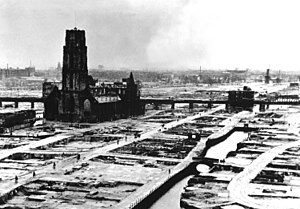 United States joined the war and the USAAF greatly reinforced the campaign, bringing in the Eighth Air Force into the European Theatre.
United States joined the war and the USAAF greatly reinforced the campaign, bringing in the Eighth Air Force into the European Theatre.
Still, that meant that the Allies would have to play the same game the Nazis had played. Many cities, both large and small, were virtually destroyed by Allied bombing. Cologne, Berlin, Hamburg and Dresden are among the most infamous, the latter two developing firestorms. I suppose the Germans finally found out what their own horrific tactics had done. Carpet bombing was also used as close air support (as “flying artillery”) for ground operations. The massive bombing was concentrated in a narrow and shallow area of the front (a few kilometers by a few hundred meters deep), closely coordinated with the advance of friendly troops. The first successful use of the technique was on May 6, 1943, at the end of the Tunisia Campaign. Carried out under Sir Arthur Tedder, it was hailed by the press as Tedder’s bomb-carpet (or Tedder’s carpet). The bombing was concentrated in a four by three-mile area, preparing the way for the First Army. This tactic was later used in many cases in the Normandy Campaign.
Carpet bombing was used extensively against Japanese civilian population centers, such as Tokyo, in the Pacific War. On the night of March, 9-10, 1945, 334 B-29 Superfortress heavy bombers were directed to attack the most heavily populated civilian sectors of Tokyo. Over 100,000 people burned to death in just one night from a heavy bombardment of incendiary bombs, comparable to the wartime number of US casualties in the entire Pacific theater. Another 100,000 to one million Japanese were left homeless. Similar attacks against Kobe, Osaka, and Nagoya, as well as other sectors of Tokyo followed, where over 9,373 tons of incendiary bombs were dropped on civilian and military targets. By the time of the dropping of the atomic bombs on Hiroshima and Nagasaki, light and medium bombers were being directed to bomb targets of convenience, because most urban areas had already been destroyed. In the 9-month long civilian bombing campaign, over 400,000 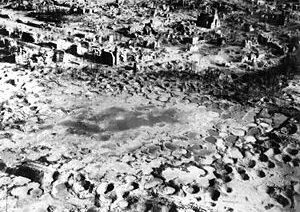 Japanese civilians died.
Japanese civilians died.
Carpet bombing of cities, towns, villages, or other areas containing a concentration of civilians is considered a war crime as of Article 51 of the 1977 Protocol I of the Geneva Conventions. Sometimes, that might make the nations think twice, but some nations, like the German Third Reich, think they can get away with anything. Hitler was crazy, and after deciding on the “Final Solution,” what is a little bit of Carpet Bombing in the mix. Carpet bombing was a horrible use of force, and in World War II and other wars since, it has taken many lives, and in the wrong hands it’s even worse.

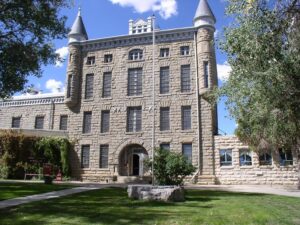 My grand-nephew, Topher Spicer is a great kid, but he’s not really a kid anymore. At 16 years old, he is really a young man, and I really can’t believe we are there already with him. I shouldn’t be surprised, because Topher is in his second year as a tour guide at the Wyoming Frontier Prison. I love that he has chose a job in history for his first job. It is very unusual for a young person to decide that they want to share a unique time in history with other people, by guiding them through the actual place where so much history took place. Topher is the youngest guide at the prison, and it’s cool that he gets to work with his best friend Zach too…the character lying under the bench, beneath Topher, which made me laugh…once I noticed him hiding there.
My grand-nephew, Topher Spicer is a great kid, but he’s not really a kid anymore. At 16 years old, he is really a young man, and I really can’t believe we are there already with him. I shouldn’t be surprised, because Topher is in his second year as a tour guide at the Wyoming Frontier Prison. I love that he has chose a job in history for his first job. It is very unusual for a young person to decide that they want to share a unique time in history with other people, by guiding them through the actual place where so much history took place. Topher is the youngest guide at the prison, and it’s cool that he gets to work with his best friend Zach too…the character lying under the bench, beneath Topher, which made me laugh…once I noticed him hiding there.
Of course, Topher isn’t all about history. He has a great group of friends that he likes to hang out with. He and 
 his mom, my niece, Andrea Beach is one of those people he considers a good friend, even if she is his mom. When he is not working or going to school, Topher can often be found at home with his mom and their dog, Butter Cup Topher has a way with animals. I have seen that in how he was with my mom, his great grandma, Collene Spencer’s cat. That cat doesn’t really like kids much. He finds that most kids play a little too rough, so he will usually go and hide when there are any kids around, but he likes Topher, and my grand-niece, Raelynn Masterson. Both Topher and Raelynn are calm people, who don’t feel the need to “bounce off the wall” all the time. They would sit there and pet the cat gently and that made Lewie very comfortable with them, and very happy with all the attention.
his mom, my niece, Andrea Beach is one of those people he considers a good friend, even if she is his mom. When he is not working or going to school, Topher can often be found at home with his mom and their dog, Butter Cup Topher has a way with animals. I have seen that in how he was with my mom, his great grandma, Collene Spencer’s cat. That cat doesn’t really like kids much. He finds that most kids play a little too rough, so he will usually go and hide when there are any kids around, but he likes Topher, and my grand-niece, Raelynn Masterson. Both Topher and Raelynn are calm people, who don’t feel the need to “bounce off the wall” all the time. They would sit there and pet the cat gently and that made Lewie very comfortable with them, and very happy with all the attention.
The third annual Black Hills trip with his grandma, Andrea’s mom and my sister, Caryl Reed is coming up, and Topher is very excited. The trip has become a wonderful summer vacation for them…something our whole family can relate to, since we all take at the very least a weekend there each year, and many of us spend 
 a week there. The Black Hills has so much to see and do, and it just never gets old. Topher likes the Black Hills so much, that he is considering Black Hills State University for college. That would be great. Its not too far from home, and the scenery is amazing. There is a lot of history there too, so my guess is that he could get a part time job in any of the historic sites in the area. They are always looking for people with some experience. We are so proud of the young man Topher is growing up to be. Today is Topher’s 16th birthday. Happy birthday Topher!! Have a great day!! We love you!!
a week there. The Black Hills has so much to see and do, and it just never gets old. Topher likes the Black Hills so much, that he is considering Black Hills State University for college. That would be great. Its not too far from home, and the scenery is amazing. There is a lot of history there too, so my guess is that he could get a part time job in any of the historic sites in the area. They are always looking for people with some experience. We are so proud of the young man Topher is growing up to be. Today is Topher’s 16th birthday. Happy birthday Topher!! Have a great day!! We love you!!

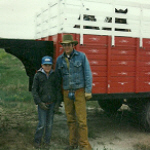 My husband, Bob Schulenberg’s uncle, Butch Hein is a rancher in Forsyth, Montana. Over the years, Bob and I have made many trips up to Forsyth to visit the family up there. While Butch is Bob’s uncle, he is only 9 years older than Bob is. That said, they had similar interests over the years. Butch didn’t really seem like an uncle to Bob, exactly. When he was a boy, Bob spent several weeks in the summers up at Grandma and Grandpa Hein’s house…Butch’s parents. Bob went to see them, but also to help out on their ranch. That was before Butch went into ranching himself, so the boys worked together in whatever need doing. Working together made for a closer relationship I’m sure, so when Bob was out of high school, and living on his own, he and his friend, Paul went up to visit the family in Montana. While that was a great idea, it was also a recipe for disaster…at least to Grandma Hein.
My husband, Bob Schulenberg’s uncle, Butch Hein is a rancher in Forsyth, Montana. Over the years, Bob and I have made many trips up to Forsyth to visit the family up there. While Butch is Bob’s uncle, he is only 9 years older than Bob is. That said, they had similar interests over the years. Butch didn’t really seem like an uncle to Bob, exactly. When he was a boy, Bob spent several weeks in the summers up at Grandma and Grandpa Hein’s house…Butch’s parents. Bob went to see them, but also to help out on their ranch. That was before Butch went into ranching himself, so the boys worked together in whatever need doing. Working together made for a closer relationship I’m sure, so when Bob was out of high school, and living on his own, he and his friend, Paul went up to visit the family in Montana. While that was a great idea, it was also a recipe for disaster…at least to Grandma Hein.
Butch, Bob, and Paul went out to the bar that night, because it was legal for Bob and Paul to drink in Montana, so the three of them went to the bar…mainly because there isn’t a whole lot of other things to do in Forsyth, Montana, due to its small size. The three of them had an…interesting evening. While sitting in the bar, and with Bob and Paul being somewhat inexperienced in the art of drinking, Butch had them try several drinks that he liked. Well, maybe some people can mix different kinds of alcohol and have no problem, but Bob and Paul were not those people. By the time they left the bar, both Bob and Paul were pretty tipsy…and that, is an understatement. Then they had to go back to Grandma’s, where they were staying, and it was at that point that they became her problem. I haven’t heard that the boys got sick or anything, but I would not be surprised. Nevertheless, in the morning, Grandma had two very hungover young men on her hands, and a son who, in her opinion was to blame. Butch was in the dog house with Grandma for quite some time, but Grandma finally forgave Butch for leading Bob astray. I’m sure he was very relieved. Nobody wants their mom mad at them.

Butch went on to become a great dad and later grandpa. He and his son, Scott run a large and successful ranch in the Forsyth area, and they are always busy. They are often on horses for hours a day. Butch had to have back surgery a while back, and I don’t know if that was caused by ranch work, but I would not be surprised. I don’t think he has ever been thrown off of a horse, but I don’t hear just everything that goes on. I suppose riding a horse and falling off of a horse go hand in hand sometimes. Anyway, he is doing much better since the surgery, and I pray it stays that way. Today is Butch’s 76th birthday. Happy birthday Butch!! Have a great day!! We love you!!
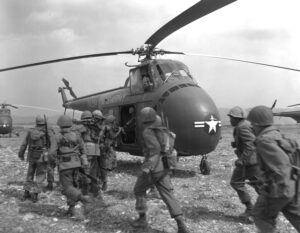 Most wars are nation against nation or against nations, but some wars split a nation in two…literally. Such was the case in Korea, which was once one nation, and after the war, became two nations. It seems like no matter which nation invades the other, or the other half, the invading nation is always trying to enslave the other nation or the other half of the nation. In the case of Korea, South Korea wanted to be a Democratic nation, and North Korea wanted to be a Communist nation. They have been fighting about their differences for years. That is simply a fight, South Korea couldn’t afford to lose, and really, North Korean people didn’t want communism either. Anyone who studies socialism and communism is clearly able to see that neither of these forms of government benefit the people of the nation. They just benefit the government. The nation split into two nations, and it was a battle to hold off North Korea from that day forward.
Most wars are nation against nation or against nations, but some wars split a nation in two…literally. Such was the case in Korea, which was once one nation, and after the war, became two nations. It seems like no matter which nation invades the other, or the other half, the invading nation is always trying to enslave the other nation or the other half of the nation. In the case of Korea, South Korea wanted to be a Democratic nation, and North Korea wanted to be a Communist nation. They have been fighting about their differences for years. That is simply a fight, South Korea couldn’t afford to lose, and really, North Korean people didn’t want communism either. Anyone who studies socialism and communism is clearly able to see that neither of these forms of government benefit the people of the nation. They just benefit the government. The nation split into two nations, and it was a battle to hold off North Korea from that day forward.
On June 27, 1950, President Harry S Truman announced that he is ordering United States Air and Naval forces to South Korea to aid the democratic nation in fighting off an invasion by communist North Korea. The Korean War had begun, and it would rage on until July 27, 1953. Truman explained that the United States was undertaking the major military operation to enforce a United Nations resolution calling for an end to hostilities, and to stem the spread of communism in Asia. Truman also sent the United States 7th Fleet to Formosa (Taiwan) to fend of any possible invasion by communist China and ordered increased military aid to French forces who were fighting communist guerrillas in Vietnam. Communism (and Socialism too) is a poison and a killer. It robs the nation of any kind of freedom. People are no longer able to do business as they would like to, but are rather at the mercy of the government business choices, and then the government takes what they make anyway.
At the Yalta Conference toward the end of World War II, Korea was split into North and South Korea when the United States, the USSR, and Great Britain agreed to divide Korea into two separate occupation zones. Split along the 38th parallel, the Soviet forces occupied the northern zone and the Americans were stationed in the south. In 1947, the United States tried to institute free elections, but the Soviets wouldn’t agree to it. In May of 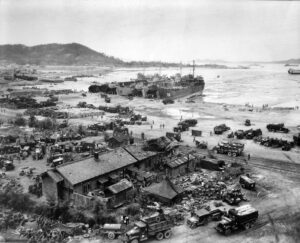 1948, the communist state of the Korean Democratic People’s Republic was established in North Korea. In August, the Democratic Republic of Korea was established in South Korea. By 1949, both the United States and the USSR had withdrawn the majority of their troops from the Korean Peninsula.
1948, the communist state of the Korean Democratic People’s Republic was established in North Korea. In August, the Democratic Republic of Korea was established in South Korea. By 1949, both the United States and the USSR had withdrawn the majority of their troops from the Korean Peninsula.
Unfortunately, that didn’t solve the problem, and likely exacerbated it. Without the controls they had placed, things quickly got bad again, and at dawn on June 25, 1950, which is still June 24 in the United States and Europe, approximately 90,000 communist troops of the North Korean People’s Army invaded South Korea across the 38th parallel. The move caught the Republic of Korea’s forces completely off guard and threw them into a hasty southern retreat. That afternoon, the UN Security Council met in an emergency session and approved a US resolution calling for an “immediate cessation of hostilities” and the withdrawal of North Korean forces to the 38th parallel. At the time, the USSR was boycotting the Security Council over the UN’s refusal to admit the People’s Republic of China and so missed its chance to veto this and other crucial UN resolutions.
On June 27th, when President Truman announced to the nation and the world that America would intervene in the Korean conflict in order to prevent the conquest of an independent nation by communism, he was also suggesting that the USSR was behind the North Korean invasion, and in fact the Soviets had given tacit approval to the invasion, which was carried out with Soviet-made tanks and weapons. There was concern that US intervention would lead to open warfare between the United States and Russia after years of “cold war.” Nevertheless, Truman’s decision was met with overwhelming approval from Congress and the US public. Truman did not ask for a declaration of war, but Congress voted to extend the draft and authorized Truman to call up reservists. Everyone knew it was inevitable.
On June 28, the Security Council met again. The Soviet Union was still boycotting, and so, in their absence, the council passed a US resolution approving the use of force against North Korea. On June 30, Truman agreed to 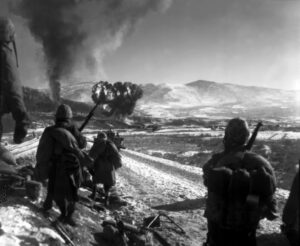 send US ground forces to Korea, and on July 7 the Security Council recommended that all UN forces sent to Korea be put under US command. The next day, General Douglas MacArthur was named commander of all UN forces in Korea. The Korean war was underway, and before it was over, South Korea, the United States, and their allied casualties included 170,927 dead and 32,585 missing (162,394 South Koreans, 36,574 Americans, 4,544 others), with a total of 566,434 wounded. North Korea and their allied casualties included 398,000–926,000 dead and 145,000+ missing (335,000–526,000 North Koreans, 208,729–400,000 Chinese, 299 Soviet), and a total of 686,500 wounded.
send US ground forces to Korea, and on July 7 the Security Council recommended that all UN forces sent to Korea be put under US command. The next day, General Douglas MacArthur was named commander of all UN forces in Korea. The Korean war was underway, and before it was over, South Korea, the United States, and their allied casualties included 170,927 dead and 32,585 missing (162,394 South Koreans, 36,574 Americans, 4,544 others), with a total of 566,434 wounded. North Korea and their allied casualties included 398,000–926,000 dead and 145,000+ missing (335,000–526,000 North Koreans, 208,729–400,000 Chinese, 299 Soviet), and a total of 686,500 wounded.
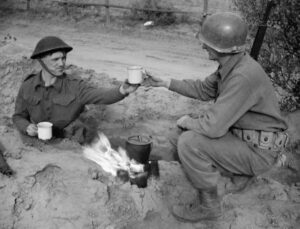 When you think of an army tank, the last thing on your mind is a way to make tea, but that became foremost in the minds of the designers of the British tanks. The Brits are well known for drinking their tea, and during World War II, that became a big problem. Apparently the enemy knew about this time-honored tradition, and took advantage of the soldiers who participated in it. During the war years, tea can be documented as being to blame for the loss of approximately 30 British tanks. The men had to exit the tank to brew their tea, and the tanks were then wide open for attack. Something had to be done.
When you think of an army tank, the last thing on your mind is a way to make tea, but that became foremost in the minds of the designers of the British tanks. The Brits are well known for drinking their tea, and during World War II, that became a big problem. Apparently the enemy knew about this time-honored tradition, and took advantage of the soldiers who participated in it. During the war years, tea can be documented as being to blame for the loss of approximately 30 British tanks. The men had to exit the tank to brew their tea, and the tanks were then wide open for attack. Something had to be done.
During World War II there was not time to get this all worked out, but in 1945, all British tanks were equipped with tea-making facilities. The British high command realized that if tank crews could make their tea on the go, then they wouldn’t be susceptible to being “caught with their pants down and their kettles out” by the enemy. So, since the British Centurion MBT (main battle tank) was introduced in late 1945, all British tanks and most AFVs (armored fighting vehicles) have been equipped with tea making facilities. The official name of the unit was Vessel Boiling Electric, but it is usually abbreviated to Boiling Vessel (BV). Unofficially, it was known as a kettle or bivvie. The BV is a square, watertight container which holds one gallon of water. The BV device draws power from the vehicle’s electricity supply and permits the crew not only to make tea, but also boil water or cook food…making their time on the battlefield much safer.
Of course, the BV unit had other important uses too, such as allowing the vehicle’s crew to produce hot water 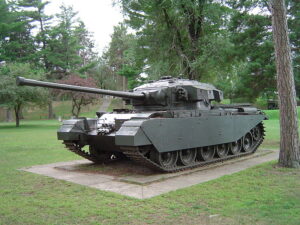 for washing or drinking purposes and simultaneously heat up canned food. The best part is that all of this can be done inside the vehicle itself, so the crew remains protected from enemy fire. That also protected them if there was danger of radioactive fallout or chemical weapons, which were considered a very real threat during the Cold War. It is now an official requirement for British AFVs to have a BV installed. This requirement is unique to the armed forces of the United Kingdom, and if you ask a British tank crew member what the most important part of the tank, they will tell you that it is the Vessel Boiling Electric, or the BV. Not only does it allow them to make their tea, but it keeps them safe when they are having a meal or drinking that tea.
for washing or drinking purposes and simultaneously heat up canned food. The best part is that all of this can be done inside the vehicle itself, so the crew remains protected from enemy fire. That also protected them if there was danger of radioactive fallout or chemical weapons, which were considered a very real threat during the Cold War. It is now an official requirement for British AFVs to have a BV installed. This requirement is unique to the armed forces of the United Kingdom, and if you ask a British tank crew member what the most important part of the tank, they will tell you that it is the Vessel Boiling Electric, or the BV. Not only does it allow them to make their tea, but it keeps them safe when they are having a meal or drinking that tea.

 My grandson, Caalab Royce is such an upbeat kind of guy. He has a great sense of humor, and loves to make people laugh. I remember when his was just a little boy. He could tell a joke, and never forget the punchline. There are many adults who can’t recall the punchline of a joke, but the joke always made sense to Caalab, so the punchline just naturally followed, and anyone within hearing distance couldn’t help but laugh. I truly think he could have been a comedian, but then, I guess he is. He just doesn’t get paid for it, and lets face it, that is a field you can’t really count on anyway. The comedians on this day, will be gone tomorrow, because their particular sense of humor is no longer thought to be as funny as it was yesterday. Better to be a jokester, because you can tell the jokes of the day with ease, and you always get the laughs.
My grandson, Caalab Royce is such an upbeat kind of guy. He has a great sense of humor, and loves to make people laugh. I remember when his was just a little boy. He could tell a joke, and never forget the punchline. There are many adults who can’t recall the punchline of a joke, but the joke always made sense to Caalab, so the punchline just naturally followed, and anyone within hearing distance couldn’t help but laugh. I truly think he could have been a comedian, but then, I guess he is. He just doesn’t get paid for it, and lets face it, that is a field you can’t really count on anyway. The comedians on this day, will be gone tomorrow, because their particular sense of humor is no longer thought to be as funny as it was yesterday. Better to be a jokester, because you can tell the jokes of the day with ease, and you always get the laughs.
As a little boy, one of the funniest things Caalab said was, “I’m older than you.” He was just a little guy, but he knew the “importance” of being a grown up. The funny thing is that like most men, I don’t think Caalab has ever really grown up. I don’t mean to say that he acts childish, but men who have never lost the idea of the funny side of life is a big part of what I mean when I say that they have never grown up. Caalab, wasn’t really wanting to be grown up, but it was more like trying to make people laugh. It worked with me, but not so much with his big sister, who as a Leap Day Baby was technically younger than her younger brother. “I’m older than you” was his way of picking on his sister, and she was not amused, hahaha!!
Caalab loves music, and plays the guitar with his dad, Travis Royce often. In fact it is a family band kind of thing, and I love hearing them play and look forward to hearing it again when we visit later this summer. Caalab is quite talented, something he got from his dad, Travis, who also plays the guitar. I don’t think his dad ever took lessons, but Caalab loved the guitar so much that he took it is high school. He was very good then too. These days, Caalab and his dad, along with his sister Shai, who is learning the Mandolin, play for family and friends…all of whom feel very privileged to be in the audience. The family often has family sing-a-longs on family night, which is wonderful to attend.
Caalab grew into a great young man, and I am very proud of him. He and the rest of my daughter, Amy Royce’s family live in the Bellingham area of Washington state, and I miss them all very much. Caalab has a wonderful 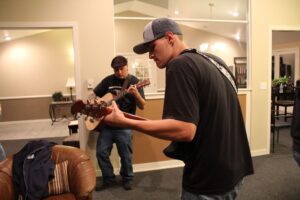
 girlfriend named Chloe Foster, who is so perfect for him. She has endeared herself not only to Caalab, but to the rest of our family too. They are just perfect together, and that makes me very happy. I can’t wait to see what the future holds for these two precious kids. I love watching how my grandchildren have grown and how they are becoming their best selves. Caalab will always be the best comedian among my grandchildren. It’s just in his nature. Today is Caalab’s 24th birthday. Happy birthday Caalab!! Have a great day!! We love you!!
girlfriend named Chloe Foster, who is so perfect for him. She has endeared herself not only to Caalab, but to the rest of our family too. They are just perfect together, and that makes me very happy. I can’t wait to see what the future holds for these two precious kids. I love watching how my grandchildren have grown and how they are becoming their best selves. Caalab will always be the best comedian among my grandchildren. It’s just in his nature. Today is Caalab’s 24th birthday. Happy birthday Caalab!! Have a great day!! We love you!!
 Hans Island is a desolate little rock of an island locate near Greenland in the center of what is known as the Kennedy Channel of Nares Strait. This is the strait that separates Ellesmere Island from northern Greenland and connects Baffin Bay with the Lincoln Sea. The island is barren and uninhabited, measuring 0.5 square mile, 4,230 feet long and 3,934 feet wide. Hans Island is the smallest of three islands in Kennedy Channel off the Washington Land coast; the others are Franklin Island and Crozier Island. The strait at this point is 22 miles wide, placing the island within the territorial waters of both Canada and Greenland (Denmark). Technically, a line in the middle of the strait goes through the island.
Hans Island is a desolate little rock of an island locate near Greenland in the center of what is known as the Kennedy Channel of Nares Strait. This is the strait that separates Ellesmere Island from northern Greenland and connects Baffin Bay with the Lincoln Sea. The island is barren and uninhabited, measuring 0.5 square mile, 4,230 feet long and 3,934 feet wide. Hans Island is the smallest of three islands in Kennedy Channel off the Washington Land coast; the others are Franklin Island and Crozier Island. The strait at this point is 22 miles wide, placing the island within the territorial waters of both Canada and Greenland (Denmark). Technically, a line in the middle of the strait goes through the island.
Most people would look at this island and say, “Ok, it is technically half Canadian and half Greenland (Denmark), but seriously, who cares?” It is a piece of rock that has no value, so there it is and nobody cares. The problem is that…oddly, both sides care…a great deal. You might be wondering why, at this point. Well, you would not be alone. I am wondering why too. For some reason, Canada and Denmark have been…well, playfully fighting over the control of this little piece of ground. Every so often, when officials from each country visit, they leave a bottle of their country’s liquor as a…power move. It really makes no sense. The island has no reserves of oil or natural gas, or anything else that would make it valuable, and yet it is the subject of an ongoing territorial dispute between Denmark and Canada over who owns this little rock…and it’s such an odd dispute at that. It will barely increase the respective countries’ land mass and yet they continue to “fight” over it.
Unlike many other territory conflicts, this one is fought in a markedly peaceful way. The potential serious diplomatic implications aside, the Canadians and Danes take turns placing their flags on the island. This curious practice that has been going on since the 1980s. But it gets even odder. The island was first disputed in 1933, but largely forgotten during World War II. The unusual dispute began again in earnest in 1984 when, during a visit to the island, the Danish Minister for Greenland planted the national flag and left a message saying “Welcome to the Danish island” (“Velkommen til den danske ø” in Danish) along with (it is said) a bottle of brandy. Ever since then, when the flag on the island is periodically changed between the Danish and Canadian flag, the bottle is also replaced. The Canadians leave a bottle of Canadian Club and the Danes a bottle of schnapps.
While the conflict is “lighthearted,” it is really a serious conflict, and remains unresolved today. At one point, it looked like they might have a solution. On May 4, 2008, an international group of scientists from Australia, Canada, Denmark, and the UK installed an automated weather station on Hans Island. To me that makes the most sense. Just share the island or let it be considered international. That isn’t exactly what happened, however. There were a number of people who think that there might be some minerals on Hans Island, making 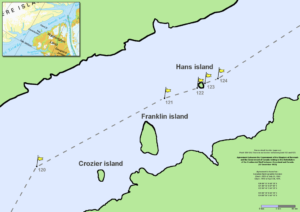 it a possible valuable island after all…and renewing the conflict. Oh boy, here we go again.
it a possible valuable island after all…and renewing the conflict. Oh boy, here we go again.
The conflict is as of today still unresolved, but there are suggestions on how to move forward. Arctic experts from Canada and Denmark propose making Hans Island into a condominium, a solution that has proven to resolve other conflicts in the past. I wasn’t sure what that was, but basically it is an agreement to share the island. It sometimes works temporarily, but usually doesn’t work long term. Most nations, Canada and Denmark included don’t like the idea of giving up their sovereignty. Time will tell, I guess, but if you ask me, the whole thing is…well, it’s just comical.
 During World War II, there were hundreds of thousands, if not millions, of bombs dropped across Europe. There is no way to know where they were dropped, or if they actually exploded, or worse yet, if they are still lurking beneath the surface waiting to detonate. Princess Diana was a champion of a similar cause, but she was concerned about landmines…just as deadly, but a different deployment. Both concerns are real, and both situations are deadly. One German bomb specialist said that the problem will haunt Europe for centuries, saying, “There will still be bombs 200 years from now.”
During World War II, there were hundreds of thousands, if not millions, of bombs dropped across Europe. There is no way to know where they were dropped, or if they actually exploded, or worse yet, if they are still lurking beneath the surface waiting to detonate. Princess Diana was a champion of a similar cause, but she was concerned about landmines…just as deadly, but a different deployment. Both concerns are real, and both situations are deadly. One German bomb specialist said that the problem will haunt Europe for centuries, saying, “There will still be bombs 200 years from now.”
One such example is that of the German town of Limberg, whose residents woke up to a startling sight on the morning of June 23, 2019. A crater in a field as large as a house. The explosion was caused by a leftover bomb from World War II. Unexploded bombs really are a huge problem in Germany and other European countries, because these long-buried weapons periodically surface or spontaneously explode. No one knows when it might happen and the aftermath can be devastating. The explosion occurred in the central German town of Ahlbach, just north of Frankfurt. Residents reported hearing and feeling a large explosion in the early morning hours of Sunday the 23rd, but no one actually saw the explosion occur. During a follow-up the next day, they found a crater 33 feet wide and 14 feet deep in the middle of a barley field. It was determined that a decomposing bomb detonator for the explosion.
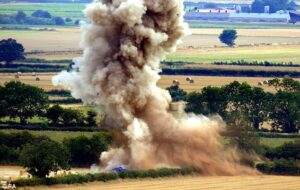
According to the BBC, “explosive ordnance demolition teams concluded that the explosive device was a 551 pound aerial bomb dropped by the Allies during World War II. The bomb was likely a M43, AN-M43, or AN-M64 500 pound general purpose bomb. General purpose bombs at terminal velocity will penetrate 3-4 building stories before detonating, so it’s not surprising this bomb buried itself so well.”
“The M65 was five feet long and 14 inches wide, and carried a payload of 280 pounds of TNT. The bomb casing, designed to produce fragment into lethal shrapnel, was .3 inches thick. An explosive ordnance disposal guidebook describes their purpose as to destroy ‘steel railway bridges, underground railways, sea craft such as light cruisers, concrete docks, medium sized buildings, etc.’”
During World War II, Germany operated several facilities in areas important to the war effort, including Limburg Field and an important railroad junction and marshaling yard. Allied bombs were dropped during the war, but often missed by miles. Falling at a high rate of speed, that morning’s bomb buried itself in the soft soil and  remained undetected for decades. Whoever cultivated the barley field obviously had no idea 280 pounds of highly unstable explosives lurked underneath, and thankfully no one was hurt
remained undetected for decades. Whoever cultivated the barley field obviously had no idea 280 pounds of highly unstable explosives lurked underneath, and thankfully no one was hurt
Seventy five years after the end of World War II, unexploded bombs are still a huge problem not only in Germany, but across all of Europe. The explosions don’t happen often, but when one explodes the results can be devastating. Governments are trying to find these bombs. Experts drill holes and look for bombs using magnetometers, searching for the signature of a bomb’s steel casing. Then they defuse or explode them harmlessly.

